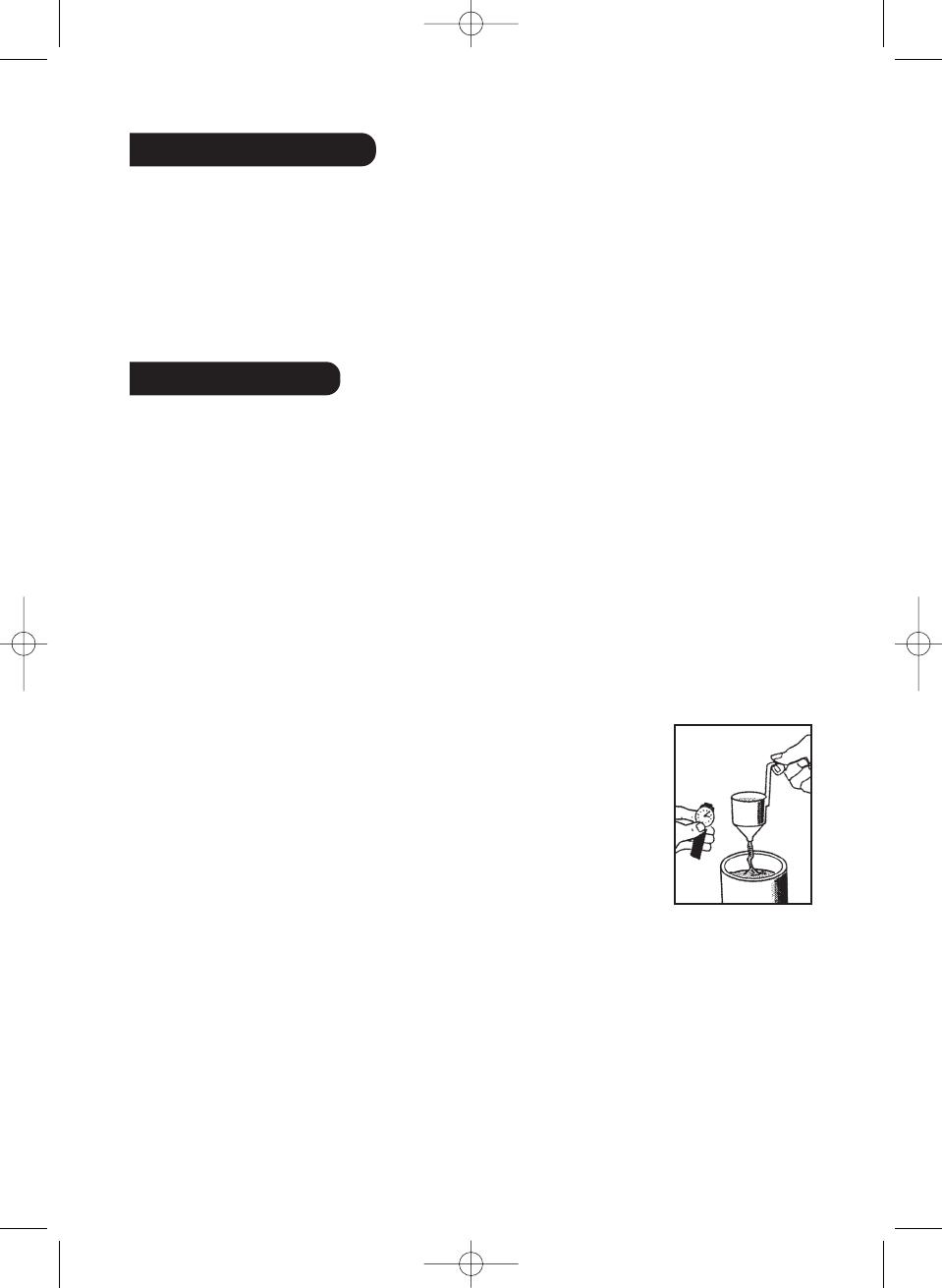
The concept
A motor feeds out a high volume of air (HV) and enables products to be sprayed at a low pressure
(LP). The product is released from the Fluid Tip of the Spray Gun at a very low pressure (0.18 bar)
and is enclosed in a high volume of air. The Hose feeds the air produced by the motor to the
Spray Gun.
The powerful motor can spray a width range of paint with or without dilution. However, there will
always be some paint which will not be suitable for the Spray Gun. The good quality paint
contains a high percentage of dry particles which make the dilution easier. The users must keep in
mind that low temperatures make the paint thicker, that’s why we recommend spraying with the
Spray Gun with a 15 degrees minimum temperature.
• Carefully cover areas which are not to be painted with a plastic cover and protective tape.
• Wear a suitable mask when spraying products (and make sure there is adequate ventilation in
the room when working indoors).
• Clean the surface you are going to paint. As well as being clean, it must also be dry and
smooth.
• Practice first on some old wooden planks to make sure you are holding the Spray Gun correctly.
• We recommend you wear protective clothing
• Stir the paint well using a mixer where possible.
• Make sure there are no solid particles in the paint.
• Many products can be sprayed without being thinned. However, if the application is not good,
thin the product progressively in stages of 5%.
• Most paints can be sprayed by being thinned just a little, e.g. by 5% or 10%.
• Some thick paints such as outer wall paints and certain undercoats will need to be thinned by
20% or 25%.
• Use water to thin a water-based product.
• Use white spirit to thin a solvent-based product.
• Certain manufacturers will indicate on the can whether a specific thinner is to be used.
Very important: when spraying for the first time, we recommend that you always leave the motor
to run for 1 to 2 minutes before applying the product. Do not forget that the Fluid Adjusting Screw
controls the quantity of paint sprayed, for instance the more the Paint Adjusting Screw is tightened
the less paint is sprayed.
The viscosity, which is expressed in DIN/sec, is the time it takes for the paint
to stop running as a continuous flow through the viscosity cup (Fig 1). Your
Spray Station 6900 comes with a 2.0mm Fluid Tip and a 2.0 mm Fluid Needle
fitted. For the best results with products which are more runny (liquid dyes,
varnishes, runny paints, wood dyes), we recommend that you purchase the
1.5 mm Fluid Tip and Fluid Needle. This applies for products which have a
viscosity between 25 and 50 DIN/sec, i.e., which will take between 25 and 50
seconds to run through the viscosity cup. Refer to the chapter on cleaning to
see how the Fluid Tip and Fluid Needle can be removed and switched for a
smaller/larger Fluid Tip and Fluid Needle assembly.
• Fill the Paint Container with the product to be sprayed. Stir well (as
mentioned above).
• Screw the Paint Container to the base of the Spray Gun and tighten accordingly.
• Unroll the motor unit air hose and attach it to the back of the Spray Gun.
• Unroll the power cable and attach the plug to the mains supply.
• Switch the Spray Station on. This will immediately cause some air to be produced, which is
quite NORMAL. However, none of the product will be sprayed until the Spray Gun trigger is
pulled.
Fig. 1
INTRODUCTION
PREPARATION
4
HV6900 UK NO226 01-09 New-Style:Layout 2 15/1/09 10:15 Page 4










